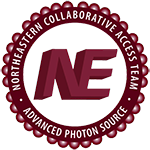Paired Spectroscopic and Crystallographic Studies of Proteases.
Publication Type:
Journal ArticleSource:
ChemistrySelect, Volume 4, Issue 33, p.9836-9843 (2019)Abstract:
<p>The active sites of subtilisin and trypsin have been studied by paired IR spectroscopic and X-ray crystallographic studies. The active site serines of the proteases were reacted with 4-cyanobenzenesulfonyl fluoride (CBSF), an inhibitor that contains a nitrile vibrational reporter. The nitrile stretch vibration of the water-soluble inhibitor model, potassium 4-cyanobenzenesulfonate (KCBSO), and the inhibitor were calibrated by IR solvent studies in HO/DMSO and the frequency-temperature line-slope (FTLS) method in HO and THF. The inhibitor complexes were examined by FTLS and the slopes of the best fit lines for subtilisin-CBS and trypsin-CBS in aqueous buffer were both measured to be -3.5×10 cm/°C. These slopes were intermediate in value between that of KCBSO in aqueous buffer and CBSF in THF, which suggests that the active-site nitriles in both proteases are mostly solvated. The X-ray crystal structures of the subtilisin-CBS and trypsin-CBS complexes were solved at 1.27 and 1.32 Å, respectively. The inhibitor was modelled in two conformations in subtilisin-CBS and in one conformation in the trypsin-CBS. The crystallographic data support the FTLS data that the active-site nitrile groups are mostly solvated and participate in hydrogen bonds with water molecules. The combination of IR spectroscopy utilizing vibrational reporters paired with X-ray crystallography provides a powerful approach to studying protein structure.</p>
